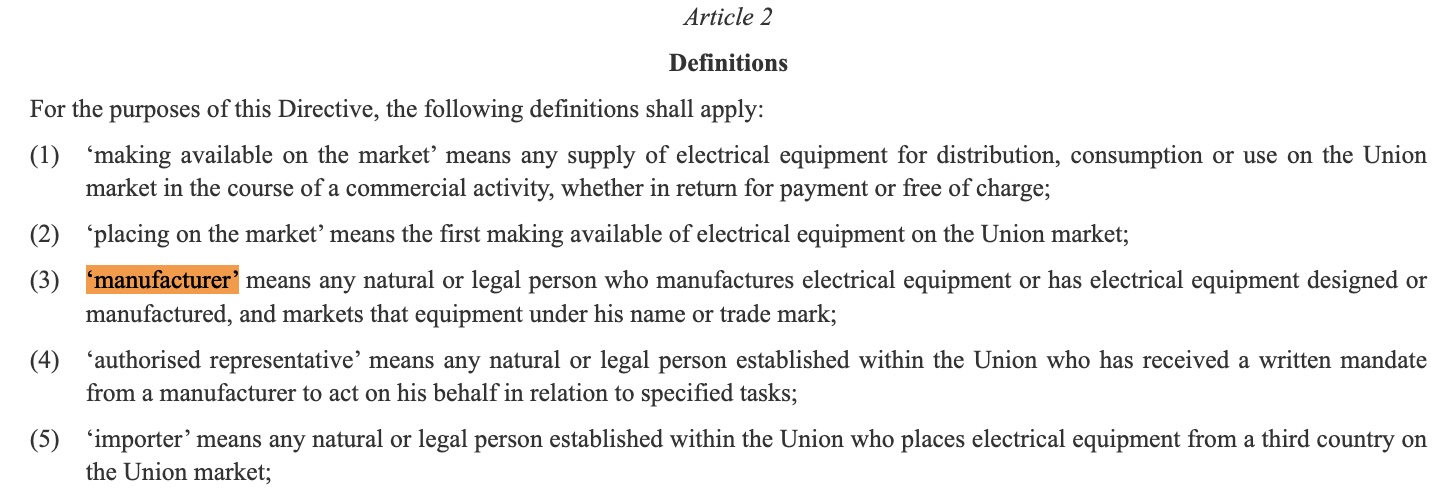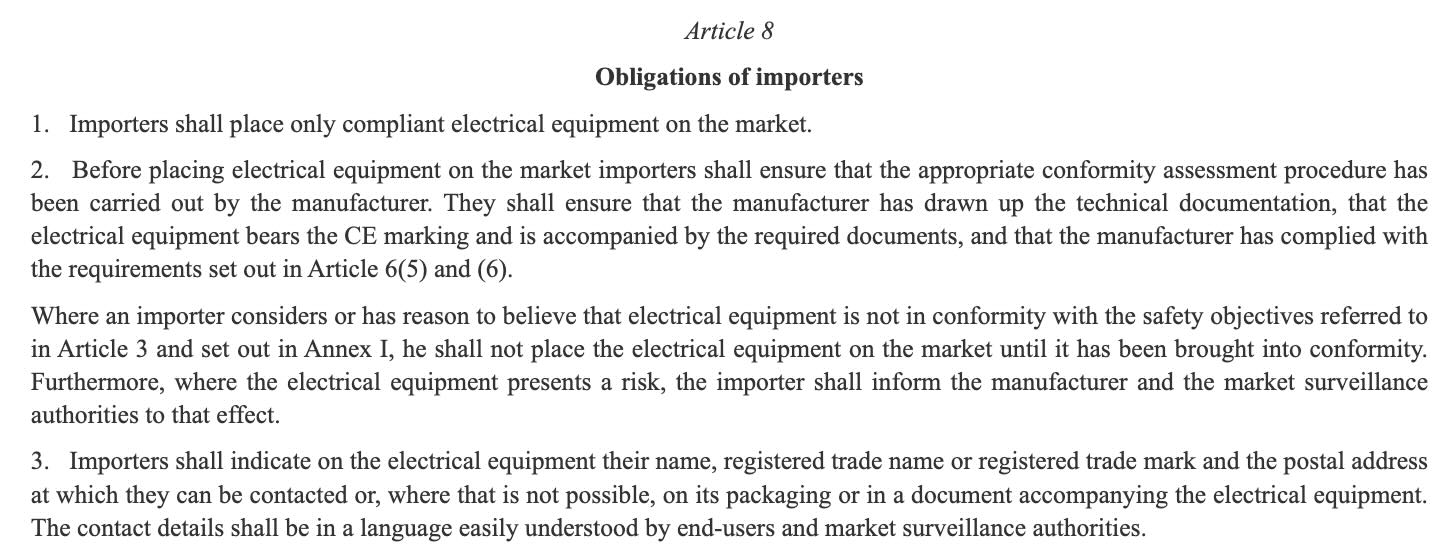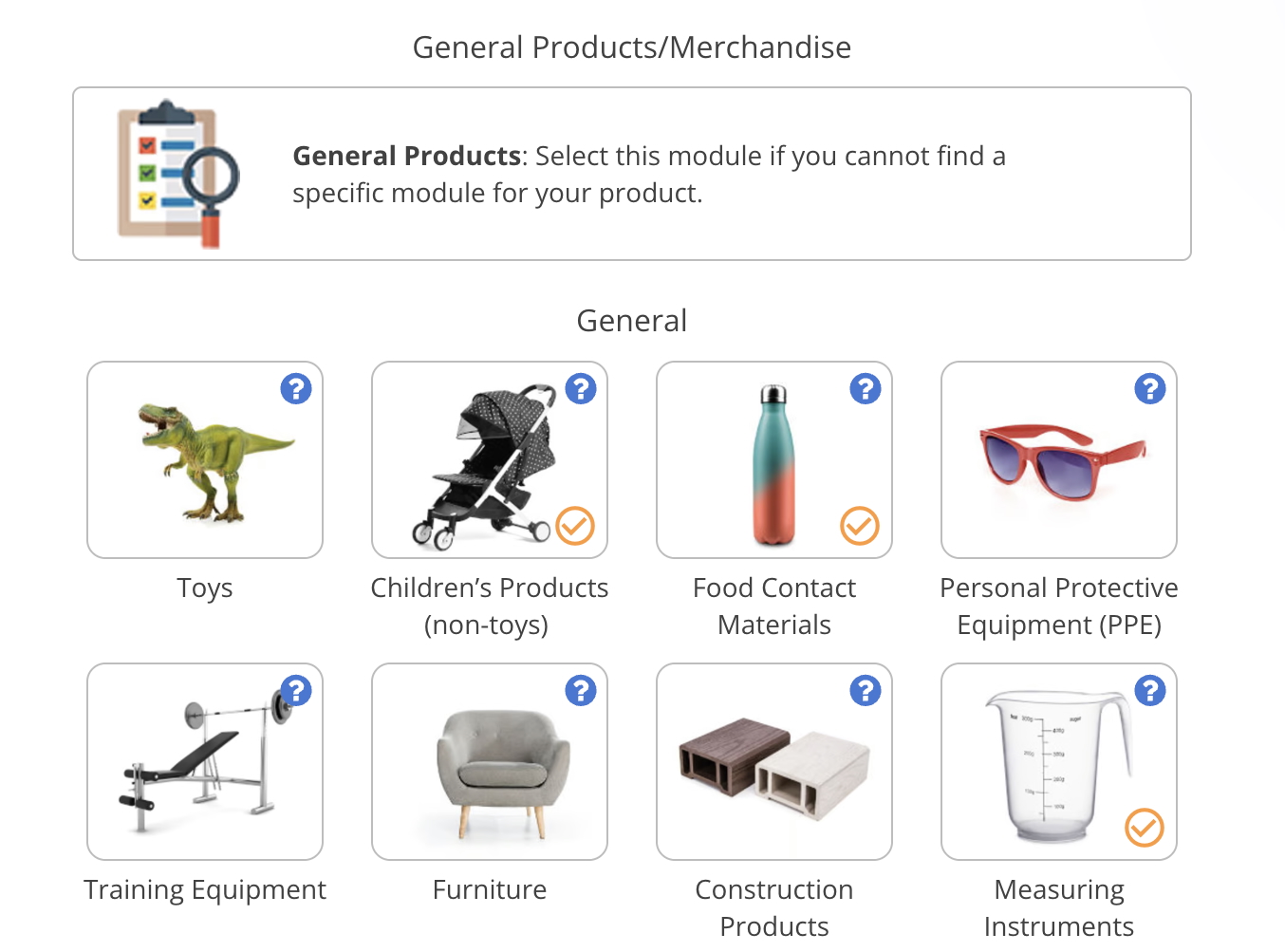
Toys, electronics, machinery, PPE, medical devices, and other products imported from China to the EU are subject to various regulations and directives mandating CE marking.
In this guide, we answer common questions about CE marking in the context of importing products from China. We also highlight some of the common misunderstandings surrounding CE marking products manufactured in China.
Content Overview

FREE CONSULTATION CALL (30 MIN)
 Ask questions about compliance requirements
Ask questions about compliance requirements Countries/markets:
Countries/markets:
 Learn how we can help your business
Learn how we can help your business
You will speak with:Ivan Malloci or John Vinod Khiatani
Do products imported from China require CE marking?
Products subject to EU regulations and directives that mandate CE marking must be CE marked regardless of where the manufacturer is located. As such, products imported from China are also subject to CE marking requirements.
Note that most, if not all, CE marking directives and regulations do not require the manufacturer to be established in the European Union. As such, the manufacturer (who is also responsible for the CE marking process) can be located in China or any other country, for that matter.
Whether a product is manufactured in the EU, China, or any other country is therefore irrelevant when it comes to CE marking. That said, the supply chain setup can impact your responsibilities.
Which products imported from China require CE marking?
Any product that must be CE marked in the EU must also be CE marked when imported from China and sold in the EU. Here are some examples:
- Toys
- Electronics
- Batteries
- Machinery
- PPE
- Medical devices
- Gas appliances
- Construction products
- Recreational vessels
Can Chinese manufacturers CE mark products?
Yes, Chinese manufacturers can affix CE marking. CE marking directives and regulations generally require that the manufacturer take the following steps:
1. Identify applicable product standards and arrange testing
2. Ensure that the product is designed to comply with the applicable standards and other requirements
3. Follows the applicable conformity assessment procedure
4. Affix the CE mark and other label information
5. Create a Declaration of Conformity (DoC)
6. Create technical documentation
7. Create instructions
8. Obtain EC-type examination certificate (if a notified body is required)
Are products manufactured in China normally CE marked?
Products manufactured in China are not, by default, compliant with CE marking regulations and directives. This can be easily explained by the fact that CE marking is an EU compliance mark, not a Chinese compliance mark.
Chinese manufacturers are not obliged to manufacture products that comply with the compliance requirements of other countries and markets.
That said, many Chinese manufacturers do produce CE marked products because this is requested by their customers. Or, because they themselves are selling in the EU.
For example, Chinese companies like Huawei and Xiaomi produce and sell products that require CE marking in the EU. As such, their products sold in the EU are CE marked, tested, and documented. Likewise, thousands of other factories in China operating as OEMs or contract manufacturers make products for European, American, and Japanese brands that design their products to comply with CE marking rules.
That said, this does not mean that every single manufacturer in China has the expertise or ability to make products that are CE marking compliant. Further, many products made in China are simply not made for the EU market and are therefore not designed to comply with EU rules to begin with.
CE marking a product is not necessarily difficult, but it requires a conscious effort from the company that is defined as the manufacturer. Problems arise when buyers assume that this responsibility exclusively falls on the factory, which is not always the case.
It is also dangerous to assume that a factory “should know” how to comply with CE marking requirements on the basis that the buyer is selling in the EU.
Can EU importers rely on CE marking affixed by Chinese manufacturers?
EU importers are obliged to verify that the CE mark has been applied correctly. This means that an EU importer cannot merely check if the CE mark is present visually and call it a day. Instead, importers must request and carefully check documentation supporting the CE mark.
Further, EU importers cannot rely on pre-existing CE marking in the following scenarios:
1. The EU importer applies their brand to the product
2. The EU importers order products to be manufactured based on their design
For starters, a product that has yet to be developed cannot be CE marked. Second, businesses that affix their branding to products or develop new products are often defined as manufacturers rather than importers.
This means that they are classified as manufacturers and must therefore actively manage the CE marking process on their own. As such, you can only rely on existing CE marking to the extent that the Chinese company remains the manufacturer.
| Manufacturer | Importer | |
| Definition | Any company that has a product designed or manufactured (in-house or using contract manufacturers) and markets it under its brand
1. Factories and brands in China selling into the EU 2. EU companies outsourcing custom-designed/branded products to Chinese factories |
Any EU company that places products from a third country (i.e., China) on the EU market |
| Examples
In the context of importing CE marked products from China |
1. Factories and brands in China selling into the EU
2. EU/other companies outsourcing custom-designed/branded products to Chinese factories |
Companies established in the EU imported existing products from China (without affixing their brand) |
| Responsibility | The manufacturer is generally responsible for actively managing the CE marking process | The importer is generally responsible for checking that the manufacturer has correctly CE marked the product (which also means that the documentation must be carefully checked) |
How can we check if the CE marking is valid when importing from China?
The first step is to determine which CE marking regulations and directives apply to the product. You can then review the articles concerning importer obligations to find the specific items that must be checked by the importer.
Request documentation
You will likely need to request the following files:
1. Test reports
2. Declaration of Conformity
3. Technical documentation
4. Product and packaging label files
5. User instructions
6. EC-type examination certificates
Once these are obtained, you must consider the following factors:
DoC and technical documentation
a. Is the manufacturer name matching?
b. Is the product SKU or model correct?
Label files
a. Is the CE mark correctly affixed?
b. Is manufacturer and product information present?
c. Are other required symbols and information present?
Test reports
a. Are the test reports valid for the correct product?
- Model/SKU
- Product photo
b. Does the test report cover the following?
- All applicable EU regulations and directives
- All applicable product standards
Instructions
Do the instructions contain the information mandated by the applicable EU regulations and directives?
What can happen if we import products that are not correctly CE marked?
The customs authorities do check incoming shipments from China and other countries. If you fail to provide the required documentation, then they have the right to seize and destroy the cargo.
Market surveillance authorities can also carry out CE marking compliance checks even if your goods get through customs.
Can we return products to the factory?
You can only return non-compliant products to the factory if they agree to take them back. If not, then you are unlikely to be able to force them to accept a return.
Further, it may not be possible to “make” the products compliant if they have not been designed with applicable product standards in mind from the beginning.
FAQ
Do electronics imported from China require CE marking?
Yes, electronics imported from China can be subject to the following regulations and directives that mandate CE marking:
- Electromagnetic Compatibility Directive 2014/30/EU
- RoHS Directive 2011/65/EU
- Low Voltage Directive 2014/35/EU
- Radio Equipment Directive 2014/53/EU
- Ecodesign Directive 2009/125/EC
- Energy Labelling Framework Regulation (EU) 2017/1369
- Cyber Resilience Act (Regulation (EU) 2024/2847)
- Batteries Regulation (EU) 2023/1542
Do toys imported from China require CE marking?
Yes, toys imported from China to the EU must comply with the Toy Safety Directive, which mandates CE marking.
Do machinery imported from China require CE marking?
Yes, machinery produced in China and shipped to the EU will need to comply with the Machinery Directive 2006/42/EC or the Machinery Regulation (EU) 2023/1230.

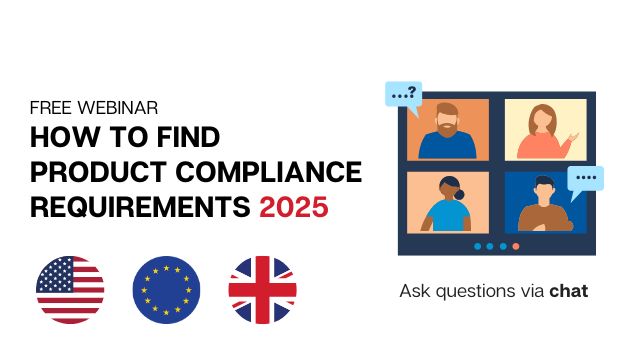
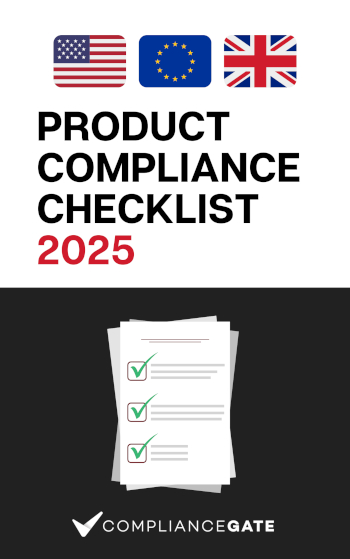




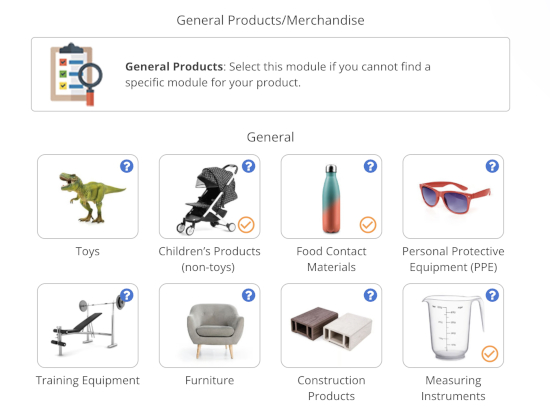






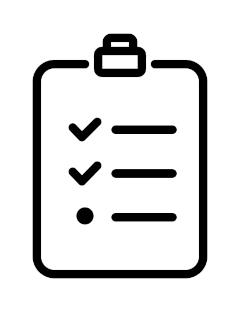


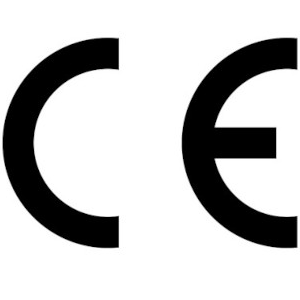




.png)
.png)
.png)
